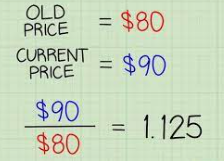The Consumer Price Index (CPI) is a vital economic indicator that measures changes in the average prices paid by consumers for a basket of goods and services over time. Understanding how to calculate CPI is essential for policymakers, economists, businesses, and consumers alike, as it provides valuable insights into inflationary trends and purchasing power. In this comprehensive guide, we’ll explore five key points to help you calculate CPI effectively and interpret its significance.
1. Select a Base Year:
The first step in calculating CPI is to select a base year against which to compare price changes over time. The base year serves as a reference point and is assigned a value of 100 for the CPI index. Typically, economists choose a recent year as the base year to reflect current consumption patterns accurately. For example, if you’re calculating CPI for the year 2023, you might choose 2020 as the base year.
2. Determine the Basket of Goods:
Next, identify the basket of goods and services that will be used to calculate CPI. The basket of goods represents a representative sample of items commonly purchased by consumers, such as food, housing, transportation, healthcare, and education. The selection of items in the basket should reflect the spending habits of the population being studied and may be adjusted periodically to account for changes in consumption patterns.
3. Collect Price Data:
Once you’ve established the basket of goods, collect price data for each item in the basket for both the base year and the current year. Price data can be obtained from various sources, including government agencies, consumer surveys, and retail outlets. It’s essential to ensure that the prices collected are for identical or comparable items to maintain the accuracy of the CPI calculation.
4. Calculate the Price Index:
To calculate the price index for each item in the basket, divide the current price by the base-year price and multiply by 100. This formula yields a price index for each item, representing the percentage change in price relative to the base year. Repeat this process for all items in the basket and calculate the average price index by taking the arithmetic mean of the individual price indices.
5. Determine the CPI:
Finally, calculate the Consumer Price Index by averaging the price indices for all items in the basket using the formula:
CPI=Sum of Price Indices\Number of Items
The CPI provides a measure of the overall change in prices for the basket of goods and services over time relative to the base year. A CPI value greater than 100 indicates inflation, while a CPI value less than 100 indicates deflation.
Conclusion:
Understanding how to calculate CPI is essential for analyzing inflationary trends and assessing changes in purchasing power over time. By following the five key points outlined in this guide—selecting a base year, determining the basket of goods, collecting price data, calculating the price index, and determining the CPI—you can calculate CPI effectively and interpret its significance in economic analysis. Whether you’re a policymaker, economist, business owner, or consumer, CPI provides valuable insights into the dynamics of the economy and informs decision-making processes. So next time you’re analyzing economic data or monitoring inflationary trends, remember these steps to calculate CPI accurately and interpret its implications for the broader economy.
